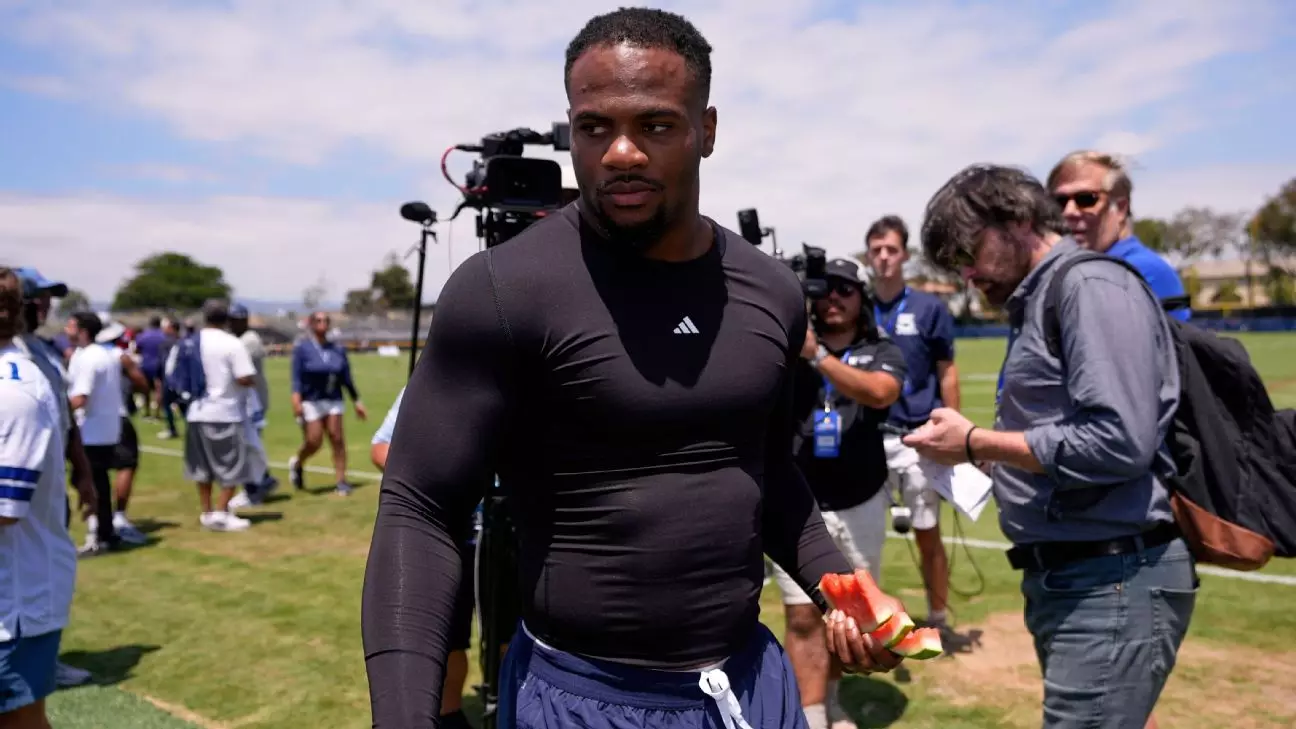The ongoing contract dispute between the Dallas Cowboys and Micah Parsons illuminates a broader issue that transcends mere negotiations. It exemplifies the often unspoken tension between management’s pragmatic approach to team-building and the athletes’ pursuit of fair recognition. Despite Parsons’s undeniable talent and proven track record as a game-changing pass rusher, the Cowboys’ front office appears complacent or perhaps overly cautious about committing to a longer-term deal — a stance that risks undermining team cohesion and future stability. This cautiousness signals a potential underestimation of Parsons’s value or a strategic desire to delay financial commitments, but it also raises questions about how the franchise perceives its star players and their place within the team’s core identity.
The real concern here is that the lack of concrete progress on Parsons’s extension fuels uncertainty and distracts from the team’s immediate goals. By not resolving these negotiations early, the Cowboys risk alienating their most explosive player while creating a cloud of doubt that could linger throughout the season. Such hesitance suggests the organization is placing short-term flexibility above the long-term trust and loyalty that star players like Parsons seek. This approach can breed resentment and diminish the locker room’s cohesion, especially when players see others in similar positions receiving lucrative extensions while their own future hangs in the balance.
Parsons’s Physical Readiness and the Implication for the Season
Despite all the drama surrounding his contract, Parsons’s physical condition remains a pivotal concern for the Cowboys. The defensive star’s injury history and recent back tightness should not be understated. While the team’s coaches and trainers express confidence in his ability to recover and perform, the fact remains that missing practice hours—particularly during crucial training camp periods—can have repercussions. Injury prevention is a complex science, but time away from full-contact drills heightens the risk for setbacks once the season begins.
The decision to limit Parsons’s on-field participation while allowing him to participate in walkthroughs and meetings reflects a nuanced understanding of his health—yet it also reveals a strategic gamble. The organization’s trust in Parsons’s self-awareness and discipline is admirable, but it’s not foolproof. Without sufficient practice reps, Parsons might struggle to fully synchronize with his teammates or adapt swiftly to game-day demands, making him vulnerable to soft-tissue injuries that could sideline him long-term. The Cowboys’s reliance on a player’s intelligence and body awareness raises questions about whether that trust is misplaced and whether it might compromise the team’s defensive potency early in the season.
The Broader Implications for the Cowboys’ Defensive Identity
Parsons’s absence from full practices and the lingering contractual uncertainty concurrently cast a shadow over the Dallas defense’s outlook. Parsons is not just a star; he’s the heartbeat of their pass rush, capable of turning games on his own. The decision to hold back on practicing him fully could be a strategic move to protect him in the short term, but it also signals a fragile defensive unit that lacks depth and consistency.
The team’s coaching staff, specifically Brian Schottenheimer, seems cautiously optimistic about Parsons’s involvement in the upcoming game. Still, optimism should not blind them to the strategic risks of under-preparation. If Parsons is not at 100%, or worse, if he suffers an injury early in the season, the entire defense could unravel, exposing vulnerabilities that might cost them critical games. Moreover, the unresolved contract issue underscores a deeper philosophical question about how the Cowboys value marquee talent versus strategic patience.
This approach—focusing on the immediate game rather than fostering long-term partnerships—may seem pragmatic, but it risks eroding trust and morale if players feel undervalued or expendable. The question remains: are the Cowboys prioritizing short-term gains over cultivating a culture of loyalty and mutual respect? Parsons, in turn, is navigating a delicate landscape, balancing his desire for fair compensation amid the franchise’s reluctance, which could influence his motivation and performance down the line.
The Dilemma of Patience in Modern Football
In today’s NFL, such contract stalemates are emblematic of a broader shift: players demanding their due recognition in a league that often undervalues their contributions until it’s too late. The Cowboys’ approach highlights a fundamental tension between organizational control and player agency, especially for a burgeoning star like Parsons who is still ascending. While the team’s cautiousness may stem from a desire to avoid financial pitfalls, it also sends a troubling message about how they perceive their key assets—more as commodities than as partners in a shared vision.
For Parsons, this means walking a tightrope—protecting his health, maintaining peak performance, and asserting his worth without alienating management. For the Cowboys, it’s a matter of whether they recognize that such patience may come at a cost: the risk of undermining team morale, losing a generational talent, or facing a complacent star who may not be motivated to give his best if he feels undervalued.
Ultimately, the unresolved contract discussions serve as a stark reminder of the fragile nature of loyalty and the high stakes involved when organizational prudence clashes with player ambition. The upcoming season and Parsons’s career will be shaped not just by talent on the field but by how much the Cowboys value and invest in their brightest stars off it.


Leave a Reply